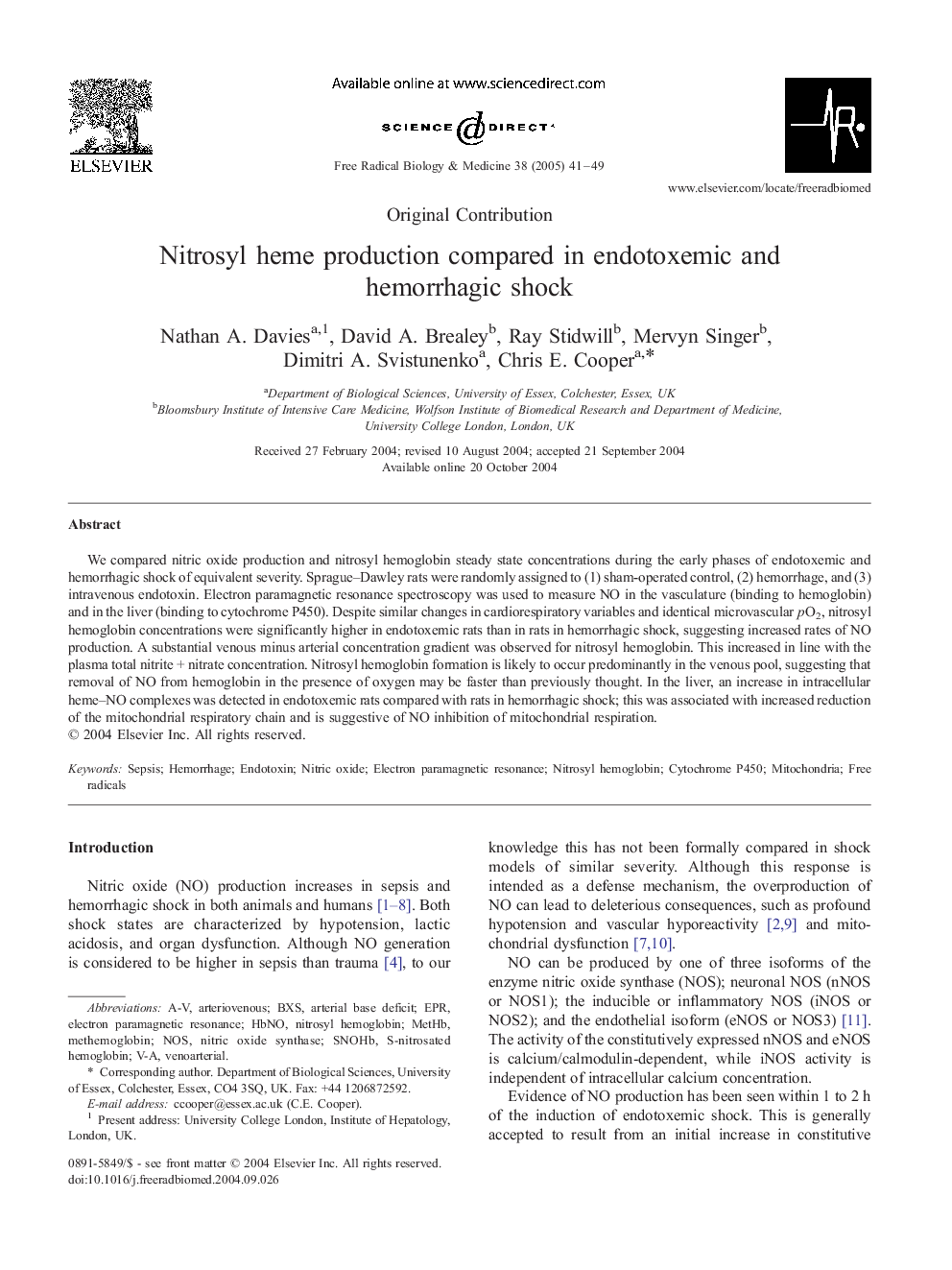| Article ID | Journal | Published Year | Pages | File Type |
|---|---|---|---|---|
| 10739579 | Free Radical Biology and Medicine | 2005 | 9 Pages |
Abstract
We compared nitric oxide production and nitrosyl hemoglobin steady state concentrations during the early phases of endotoxemic and hemorrhagic shock of equivalent severity. Sprague-Dawley rats were randomly assigned to (1) sham-operated control, (2) hemorrhage, and (3) intravenous endotoxin. Electron paramagnetic resonance spectroscopy was used to measure NO in the vasculature (binding to hemoglobin) and in the liver (binding to cytochrome P450). Despite similar changes in cardiorespiratory variables and identical microvascular pO2, nitrosyl hemoglobin concentrations were significantly higher in endotoxemic rats than in rats in hemorrhagic shock, suggesting increased rates of NO production. A substantial venous minus arterial concentration gradient was observed for nitrosyl hemoglobin. This increased in line with the plasma total nitrite + nitrate concentration. Nitrosyl hemoglobin formation is likely to occur predominantly in the venous pool, suggesting that removal of NO from hemoglobin in the presence of oxygen may be faster than previously thought. In the liver, an increase in intracellular heme-NO complexes was detected in endotoxemic rats compared with rats in hemorrhagic shock; this was associated with increased reduction of the mitochondrial respiratory chain and is suggestive of NO inhibition of mitochondrial respiration.
Keywords
Related Topics
Life Sciences
Biochemistry, Genetics and Molecular Biology
Ageing
Authors
Nathan A. Davies, David A. Brealey, Ray Stidwill, Mervyn Singer, Dimitri A. Svistunenko, Chris E. Cooper,
